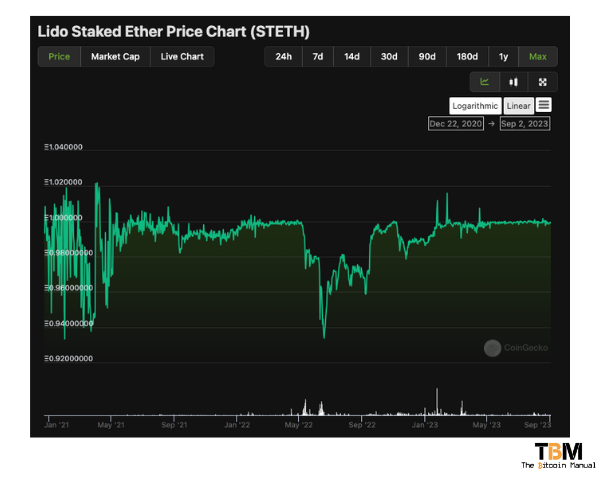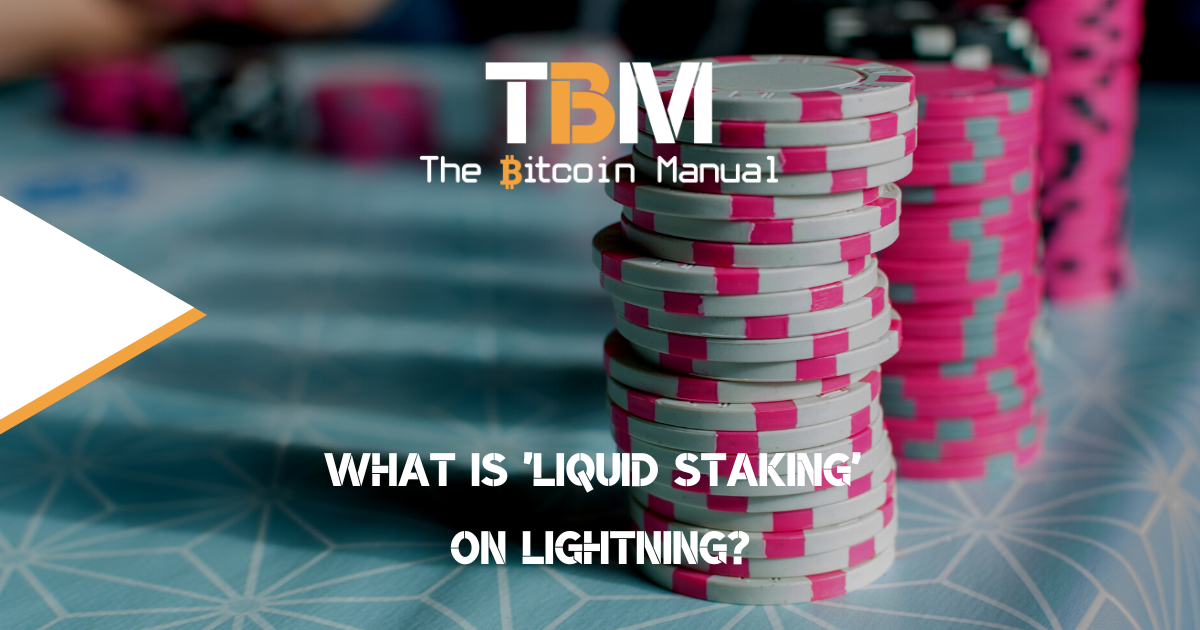The Lightning Network is a second-layer payment protocol that enables instant and low-cost Bitcoin transactions. It does this by connecting a network of payment channels between users who opt to run their own Lightning nodes. These channels allow users to send and receive payments without having to rely on the Bitcoin blockchain for every confirmation.
As a Lightning node runner, you can use these payment channels to pay other nodes on the network, or you can route payments for other users and net a fee for providing a payment path. While the Lightning Network provides obvious incentives for those who intend on making regular payments in Bitcoin, it also provides an avenue for revenue generation.
There are several ways to earn money on the Lightning Network.
One way is to route payments through your Lightning node. When you route payments, you can charge a small fee. The amount of the fee is up to you, but it is typically a small fraction of a satoshi but can move up to a few satoshis.
Another way to earn Bitcoin on the Lightning Network is to provide liquidity to the network. This means having a balance of Bitcoin in your Lightning channels. When someone wants to make a payment, and there is not enough liquidity on the network, your node can be used to provide the necessary funds. You will then charge a fee for this service.
The Lightning Network is constantly being improved to ensure capital can be used more effectively, and there are projects like liquidity marketplaces working on improving liquidity on the network. These projects have the potential to make it easier for users to earn money on the Lightning Network.
As Lightning Network adoption improves and more payments are routed, the competition to earn fees will increase. Nodes of different sizes will compete to capture that routing income as they become apparent.
Accessing income opportunities on Lightning
Earning income on the Lightning Network is no free lunch; you will need to work at it, building a well-connected node and ensuring that you’re constantly rebalancing your channels and sourcing high-traffic connections on the network.
As a successful Lightning node, your primary methods of income will be:
- Routing fees: When you route payments through your Lightning node, you can charge a small fee. The amount of the fee is up to you, but it is typically a small fraction of a cent.
- Liquidity fees: You can also earn fees by providing liquidity to the network. This means having a balance of Bitcoin in your Lightning channels. When someone wants to make a payment, and there is not enough liquidity on the network, your node can be used to provide the necessary funds. You will then be charged a fee for this service.
Yet oftentimes, this is not enough, and you might have to look at driving traffic to your node by providing additional services users would happily pay for and want to use regularly.
- Services: You can also earn income by providing services on the Lightning Network. For example, you could offer a Lightning-powered payment processor, POS system, supporting exchange order books, providing submarine swaps, synthetic stablecoins or creation and management of Taproot Assets.
As the Lightning Network attracts more users and transactions from the base layer, the ability to earn a yield becomes more attractive; Lightning Network Marketplace Amboss has even started to build out a yield curve for liquidity deployed on the network in the form of their LINER index.
Finding a yield narrative
While there are ways to source income from the network, it’s not a given that it can be captured. The average retail user might have the capital, but not the time or expertise to exploit it. The idea that there is untapped yield in the Lightning Network makes for an attractive narrative that can be used to source capital from the public markets.
Over the last few years, the yield-chasing DEFI sector has tarnished its reputation, with the current landscape leaving many investors disappointed and out of pocket. While a small cohort had made a profit, the majority have been stuck in failed ponzis.
- Unsustainable rates: Yield farmers are often promised high-interest rates, which can attract investors. However, these high interest rates are often unsustainable and can be a sign of a scam which leaves investors stuck holding illiquid coins or unable to sell as they bought into honeypots.
- Impermanent loss: When you provide liquidity to a liquidity pool, you are exposed to impermanent loss. This means that you can lose money even if the price of the assets in the pool does not change.
- Smart contract risks: DeFi protocols are built on smart contracts, which are computer programs that automate transactions. These smart contracts can be buggy or hacked, which could lead to losses for yield farmers.
- Rug pulls: A rug pull is a type of scam where the developers of a DeFi protocol abandon the project and take all of the investors’ money. Rug pulls are a common occurrence in the DeFi space.
Having been burned by the DEFI market, investors have become apprehensive about investing in these opportunities, especially when the source of the yield seems questionable. To lend credibility to DEFI projects, Stroom Network, a new start-up, looks to launch a liquid staking project aimed at sourcing yield from Bitcoin’s Lightning Network.
What is liquid staking?
Liquid staking is a way to earn rewards on your staked cryptocurrency without having to lock it up. With liquid staking, you can still use your staked tokens while earning rewards. Liquid staking works by using a smart contract to split your staked tokens into two parts:
- A liquid token
- And a non-liquid token.
The liquid token can be used to earn rewards, while the non-liquid token is used to secure the network. The most popular liquid staking token is LIDOs stETH an ERC-20 token meant to be issued for every ETH staked in an Ethereum validator.
As a stETH user, you can stake your ETH and move in and out of your position through the secondary market. Shroom aims to take this concept and apply it to the Bitcoin Lightning Network.
What problem is liquid staking trying to solve?
Earning an income on the Lightning Network requires active management; this is not a set-it-and-forget-it system and involves an investment in infrastructure and capital. You would need to run a Bitcoin core node and Lightning node, keep it running 24/7, and then commit capital to the node and establish channels that you think will generate considerable traffic.
This is a considerable barrier to entry, and retail users are likely to avoid it or fail at capturing that yield; instead of having to deal with all the complexity, liquid staking allows you to seed a custodian with your capital and hope to profit off of their efforts in managing their Lightning node.
Shroom is essentially tokenising and crowd-sourcing capital needed to be an LSP. They’re betting on the idea that the yield on the Lightning network will be enough to convince investors to fund their operations.
How would liquid staking work?
The Shroom network will run Bitcoin Lightning nodes and sell off the channel capacity as a third-party token. The protocol effectively assigns BTC deposits within the Lightning Network to generate routing fees while also generating its own equivalent of wrapped BTC (wBTC), called lnBTC, on a 1:1 basis.
Users can hold their ERC-20 token lnBTC and earn a yield or use this secondary market to sell it to another user willing to take the duration risks.
Liquid staking on Lightning is a double spend.
Liquid staking tokens are not inherently a double-spend risk. Still, there are some risks associated with them that could lead to double spending since you’re relying on a smart contract oracle to maintain the peg, and the custodian never manipulates it.
A malicious custodian could issue more LN-BTC than the have BTC, or their oracle could be compromised by a third-party actor.
Additionally, it’s important to remember that Lightning channel funds are liquid; they can be spent on Lightning or back to the base chain by the custodian. So it would be easy for anyone who accesses an LN nodes keys to rug pull the real BTC and leave users holding an unbacked token on Ethereum.
Liquid staking tokens can depeg.
Liquid staking tokens, like any pegged token, carry the risk of depegging due to issues like:
- Liquidity issues: If there is not enough liquidity in the market for the pegged token, it may be difficult to buy or sell it, which could lead to depegging.
- Fraud or manipulation: If there is fraud or manipulation in the market for the pegged token, it could also lead to depegging. For example, if someone were to sell a large amount of the pegged token at once, it could cause the price to drop below the peg.
- Technical problems: Technical problems with the protocol that the pegged token is built on could also lead to depegging. For example, if there is a bug in the protocol that allows for the creation of counterfeit tokens, it could cause the price of the pegged token to drop.
- Operational issues: If the keys to the wallet are lost, those tokens pegged to it are inaccessible, and therefore, those tokens are unbacked.
- Oracle issues: If the Oracle feed matching the pricing of the asset and supply breaks or is manipulated, the asset can depeg.
Depegging can happen to any token, as you can see from the history of stETH trading with ETH since its launch.

Do your own research.
If you want to learn more about liquid staking for Lightning, use this article as a jumping-off point and don’t trust what we say as the final say. Take the time to research, check out their official resources below or review other articles and videos tackling the topic.
- https://stroom.network/




